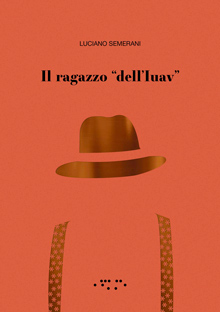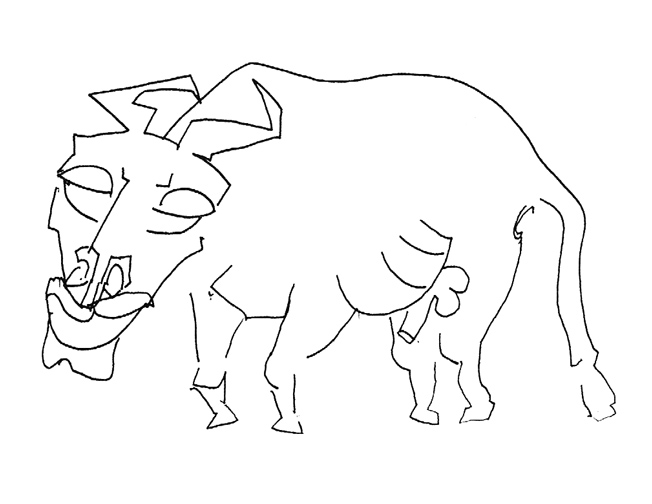
Il ragazzo “dell’Iuav”
A book begging to be read and reread, each chapter addictive, abounding in cross-references, digressions, reflections, remarkable characters, and anecdotes whose variety represents as many “trails” to be followed, which buttonhole and propagate new curiosities, questions, and thoughts in the reader.A rhapsodic autobiography in the form of a fable, made up of stand-alone episodes without a temporal or topical framework, which seem to gush out from a long session of the author’s self-reflection, gradually constructing a polyhedral Borges-like self-portrait page after page. And the whole narrated with a skill in writing, impossible to know whether well-thought-out or intrinsic, wherein high and low tones, affectionate and not infrequently picturesque and humorous anecdotes, reflections and considerations of a theoretical ilk, with interpretations and value judgements on facts, personalities, works of architecture of an important past era, are arranged in a complementarity of antagonisms (to borrow the Samonàesque title of one chapter), offered to the reader with a pleasantness of reading which winds throughout the book, the whole enriched by frequent interjections in dialect. The text begins – and not by chance, because the theme of friendship with, esteem for, and loyalty to certain of his peers, Nino, Aldo, Guido, Gianugo, Pierotto, Miela, Gae, and of course Gigetta, and many others, is a guiding thread which runs through all the memories, “for our generation friendship has been a very important thing” – with warm recollections of his friend Domingo Alvarez, a great Venezuelan architect and artist with a Venetian sojourn behind him, visiting the new pavilion of the Hospital of SS Giovanni e Paolo, in which we can appreciate a certain solemnity of pace and composition, reminiscent of the nearby façade of the Scuola Grande di San Marco by Codussi (which “Benevolo says looks like a wardrobe, and instead is a masterpiece”). And “If Domingo likes our work, that’s all that matters to me!” The theme of the hospital, the architecture and life of a hospital, returns several times, starting from the 1963 competition for the Venice City Hospital, with some young peers won jointly with a project by the elder Daniele Calabi, but both sacrificed upon the altar of Le Corbusier by the benevolent but bitter and unconfutable severity of Giuseppe Samonà, (“if ours is a beautiful hospital which works, that of Le Corbusier is a work of art, ... and we are too young”, but also criticized maliciously with the tasty anecdote of the cheque for the fee which fell from the master’s hands and ended up in the canal water!). A story which came to an end years later (“a real historical nemesis”) with the construction, having changed the area of intervention for the new pavilion, the one Domingo likes. In the midst of all this, the equally roundabout and rather dramatic story of the triple coincidence, again involving Calabi, in the assignment for the Hospital of Cattinara, those two L-shaped towers which “vaunt solidity and safety to shield precarious existences” whose story the author traces with his ward mates, he in turn hospitalized and in a precarious condition: the meeting with Calabi at the Antica Locanda Montin in Venice (“They may call me to Trieste… I need a partner … I only know Roberto Costa there… and you ... would you be interested… maybe? Darn right I’m interested!”) then his sudden disappearance, the chat with Nordio, the misadventures, the visit to the building site with Zevi, the plans for projects (“that way we forget to think that tomorrow it’s our turn in the operating theatre”). Central and recurrent in the book are the pages dedicated to his relations with the two masters, Rogers and Samonà, fundamental in forming the author’s personality, but quite diverse: one the “Professor”, “so full of ideas about the reasons for the project but reticent on the choices of language”, whose method was to use a pressing series of questions which triggered other questions, hence “the need for a theory of architecture”; the other, “Uncle Ernesto, friend and teacher”, “authoritatively shy, cheerfully joyless”. And in the wake of these two, on the one hand the experience of the Sacca del Tronchetto competition, the reconstruction at Vajont, of Friuli after the earthquake, the Town Hall of Osoppo, and on the other, the apprenticeship in the Via dei Chiostri studio and at the house in Via Bigli, with their “climate of nobility”, the visits to the Velasca building site and Rogers’ family tomb in Trieste, the plan to develop the Trieste waterfront, and the tomb of Rocco Scotellaro in Tricarico. Snippets of private life and snippets of History (with a capital H) in Italian architecture of the second half of the 20th century, recounted as an insider, with an empathy that enthrals and wins over the reader. Interspersed with these, many but many other glimpses, always narrated with an understated wisdom steeped in depth and culture, which we can but hint at in this rather arid listing which penalizes the sheer vivacity of his writing, but which renders at least in part the fullness and variety of the excitement of the topics covered and the situations encountered: the Milanese period, with the successive houses in Via Ancona, Via Sant’Andrea, Via Boccaccio, and Porta Ticinese, then the hangouts of the Brera, at the Jamaica, at the “Maria”, with painters, artists and writers of the post-war period in Milan; the fundamental teaching in Venice, which was to see him through his life, and then also the periods in Vienna, at the ABK, summoned by Fonatti and Peichl, and not an entirely happy experience, where few were interested in “my historismus”, and the Cooper in New York of Hejduk, Eisenman, Abraham – so much better, where “they’re looking forward to my criticism, and there is an immediate rapport with the American youngsters” after the presentation by Hejduk who did not know whether architecture had a God, nor where He might live, but “If He lives and He has testicles, his testicles are in Venice”; a long stay in Paris for the exhibition Trouver Trieste, arguably a watershed in the author’s life; exhibitions at the Masieri, and “Phalaris”, the Tyrant of Agrigento, who hated architects and who gave the title to his magazine, in which alongside the architecture appeared authoritative names of poetry, cinema, theatre, the figurative arts and cuisine, recommended to him by a theoretical physicist friend of Hermann Henselmann, he of the Stalinallee, who dwelt (the theoretical physicist), in a house in a wood built by Konrad Wachsmann for Albert Einstein; his family origins in Brno (“like Mahler, Loos, and Hejduk”), and the change to an Italianized surname, like so many in Trieste; the annual rite to celebrate May Day in Conconello, with the festive participation of motley friends from Trieste, Venice, and Milan – architects, teachers, artists, and politicians; the misunderstandings and a certain coldness with Zevi, the scant empathy, albeit only hinted at, with such famous and important celebrities as Claudio Magris, and the explicit allergy for others like Giancarlo De Carlo or Leonardo Benevolo; the cultural environment of Trieste, from Umberto Saba to the theoretical physicists, researchers and professors of the SISSA and ICGB, Franco Basaglia and his artist brother, that of Marco Cavallo, at the exhibitions at Galleria Arte Viva/Feltrinelli and the Revoltella Museum, against the background of the city’s omnipresent tormented modern history, the national, cultural and religious cross-breeding of Trieste, between Mitteleuropean, Italian, Slovenian, Tito supporters, allies, which impregnated the personal story of the author and his family. And at the end of the volume, an essential selection of black and white line drawings, among which stand out those dedicated to images of bulls, in particular that of the ‘worn-out bull’, not by chance ending up on the back cover. Closing the volume is a dramatic narration, a true piece of literature, about his liver transplant, at a little over fifty years old, an age at which “in Britain they won’t operate on you any more”. Dramatic, but recalled with a cold objectivity perhaps permitted only in retrospect but dramatic nonetheless in the radicalness of the diagnosis, the variability of the therapy, in the words of hope of the young radiologist from Trieste, called Petz, possibly a relative of one of his students (“It’s such a shame that an intelligent person like you, with all the things that you could still do is not thinking of a transplant!”), in the nightmares of the operating room, in the anguish of uncertainty on the outcome (“60% probability that it will go well, 40% badly”), in the Treccani dictionary entry (“cirrhosis is almost always lethal”), in the surgical mechanics described almost sadistically, in spates of delirium which almost become poetry (“when you enter the Arena and sense the presence of your Adversary, but you have no means of escape”), visions of unusual animals, lions with a girl’s face, until the outcome, with the engineering of the drainage and the uncertainty that persists. Quite different from the self-mockery of the pages on his most recent accident during the night with the triple somersault of the car which ended up in a field of maize (“He’s not dead! ... He’s not dead!”), but sharing that recurrent, mystifying, hospital-based destiny of the author, in life and in work. In short, an autobiography which is extremely rich, not “scientific” but full of science and humanity, of private and public facts, which at the end of the reading convince the reader to agree with the words of hope of the friendly young radiologist from Trieste and to wish that the author may indeed tackle the many other things waiting to be done.
Enrico Bordogna

Title: Il ragazzo “dell’Iuav”
Language: italian
Publisher: LetteraVentidue
Characteristics: 21x15 cm, paperback, colors
ISBN: 978-88-6242-401-1
Year: 2020